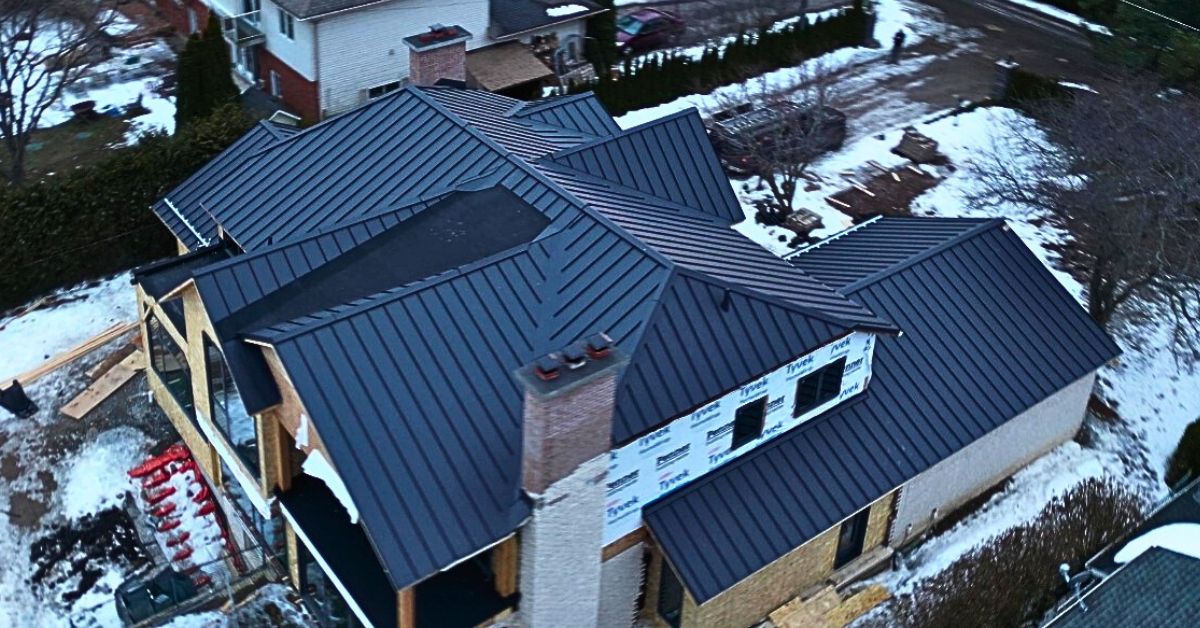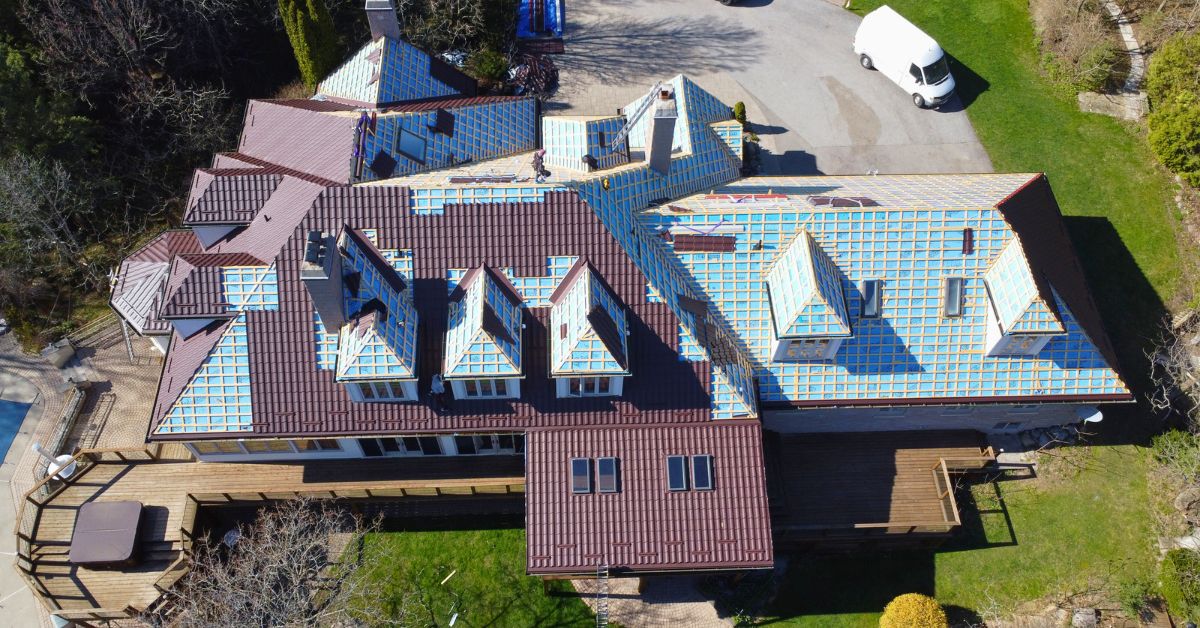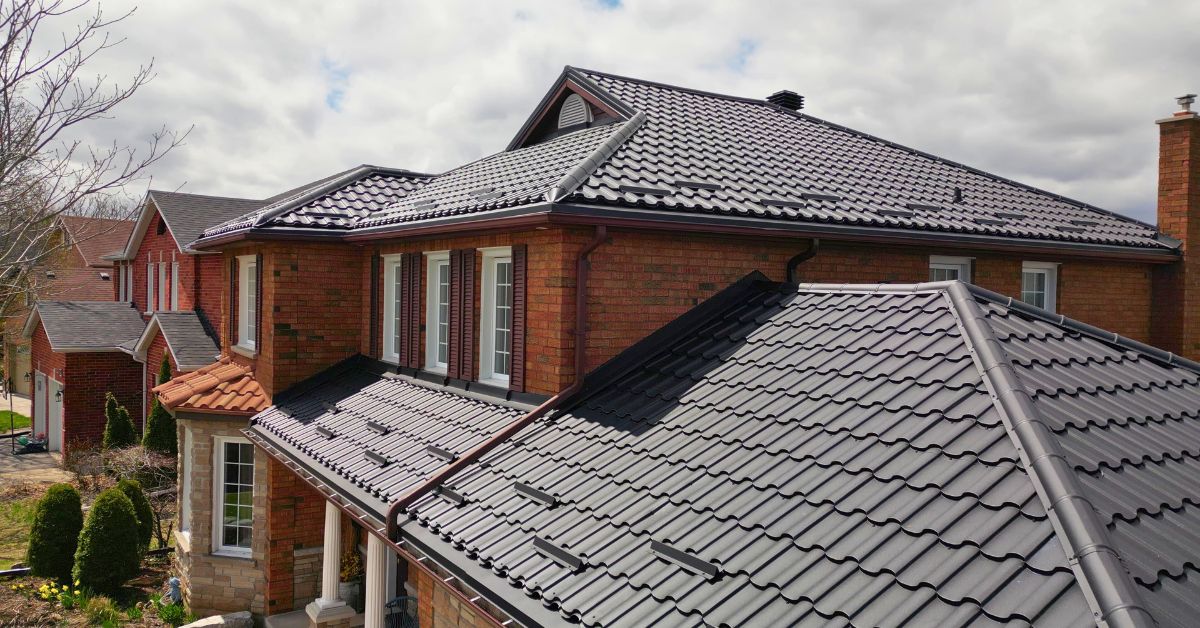In Ontario, the main risks to a roof are created by thaw and freeze cycles, heavy wet snow, freezing rain, and the snow slides. These factors overload the structure, damage edges, flashings, and penetrations, and lead to leaks.
A homeowner should notice signs from the ground and from inside the house. Ice along the eaves, overflows from gutters, a wavy or lifted edge, traces of snow sliding, damp spots after a thaw, frost and a musty odour in the attic.
DIY work on the roof is unsafe and often makes the problem worse. The best course is early recognition of the signals and contacting professionals. For homes with a risk of sliding, it is worth considering the installation of snow retention systems.
Why snow creates roof problems in Ontario
Snow in Ontario is often wet and heavy. Its weight increases after a thaw and rain-on-snow. The load concentrates at eaves, in valleys, and near skylights. With temperature swings, ice dams form. Water backs up under the roofing and enters flashings and penetrations.
On metal roofs there is added thermal expansion of panels and a risk of uncontrolled snow slides. On asphalt shingle roofs the starter course and edges suffer. On flat roofs ice and ponding water at drains are hazardous. These mechanisms lead to leaks and interior damage.
Visible warning signs to watch from the ground
Outside, watch for ice along the eave line, long icicles above entrances, gutter overflows or ice in gutters, a wavy or lifted roof edge, rattling trim in the wind, snow buildup in valleys, and traces of uncontrolled snow slides. On asphalt shingle roofs, granules at the bottom of the downspout are a warning sign. On metal roofs, fresh scratches from ice may be visible.
Inside the house, check ceilings after a thaw and look for damp marks around skylights and penetrations. In the attic, problem indicators are frost on framing members, a musty smell, wet spots on the sheathing, and light showing around penetrations.
How different roofs respond to winter conditions
Different roof types have their own vulnerabilities in snow and thaws. A homeowner observes signs from the ground and from inside. Do not perform work on the roof. If signals repeat, call professionals.
Metal Roofing
Panels expand and contract with temperature swings. Snow slides can shift edges and trim. Risk is higher in valleys, where the roof meets walls, around skylights and solar attachments. Uncontrolled sliding over entrances and walkways is dangerous. Problem signs are fresh scratches, misaligned trim, noises at the eaves, and damp marks after a thaw.
Asphalt Shingles
The starter course and edges suffer. Ice dams force water under the roofing. Granules accumulate at the downspout. Shingles may lift in the wind after a thaw. Repeating stains on ceilings and a wavy eave line require an inspection.
Low Slope and Flat Roofs
Standing water and ice at drains are hazardous. Ice increases weight and opens seams during warming. Risk signals are water spilling down the exterior wall, damp rings/stains around penetrations, local sags, and cracks in finishes. Any deformations must be checked by a professional crew.
Safer alternatives to roof snow removal
DIY roof clearing is dangerous. There is a risk of falling, damaging the roofing, and voiding the warranty. Emergency snow removal is performed by a professional crew. IIBEC recommends avoid manual snow removal and instead hold and evenly distribute snow and evenly distributing it with engineered snow-retention systems, especially on metal roofs.
For standing seam, clamp attachments without drilling are used. For corrugated metal and metal tile, barriers on brackets are installed with sealing and fastening into the structural deck/framing. For slate and clay tile, individual snow stops and rail systems are installed.
On asphalt shingles, guards are applied according to a layout over the whole field or placed locally above entrances after calculation. The layout and fastener spacing are determined by a specialist.
Where snow guards matter most?
The main task of snow retention is to protect people and the areas below the eaves. Risk is higher where snow slides can strike entrances and utilities.
Priority areas are entry doors, walkways, ramps, garage doors, driveways, decks and patios. It is important to protect sections above gas and electric meters, heat pumps and outdoor air conditioning units. Additionally, control snow above roof windows and skylights, at wall transitions, in valleys and where an upper roof overhangs a lower one.
On metal roofs, continuous tubular or rail systems along the eaves and above risk areas are effective. Individual stops are used according to a layout and only after a load calculation. Installation is performed by a professional crew.
How much snow can a roof hold in Ontario
There is no single safe number. Load-bearing capacity depends on the house design, the age of the structure, the slope, and wind-drift zones. It is determined not by the height of the snowbank but by weight and the snow load calculation. After a thaw and rain-on-snow, the mass increases quickly. Ice is heavier than snow and creates localized overloading at the eaves and in valleys.
There are signs that require calling professionals. Visible sags and new areas of deflection. Loud cracking sounds. Doors and windows begin to bind. Cracks in finishes appear and damp spots after a thaw. Long icicles above walkways and ice that blocks gutters. Do not go onto the roof. Document the situation from the ground and wait for the crew.
What you can do safely
Observe and document only from the ground and from inside the house. Take photos before and after snowfall and after a thaw. Record dates and weather warnings. Outside, note ice along the eaves, gutter overflows, icicles above entrances, and any changes in the eave line. Inside, check ceilings after a thaw, and when access is safe, inspect the attic for frost, a musty smell, and wet marks. These steps cover basic snow load roof safety tips.
Block off areas below the eaves where snow slabs may slide. Keep emergency crew contacts at hand. If in doubt, do not go onto the roof and do not try to clear snow yourself. Call professionals.
Request a Winter Roof Inspection
Snow and ice in Ontario create structural overloading, ice dams, and a risk of uncontrolled sliding. The safe strategy is early recognition of signs from the ground and contacting professionals.
For metal roofs, a durable solution is professional snow guards engineered for the specific home. We will perform an inspection, identify risk areas, and propose a snow-retention layout for the metal roof. Contact Monarchy Roofing to schedule a consultation, and we’ll recommend a custom solution for your home.




